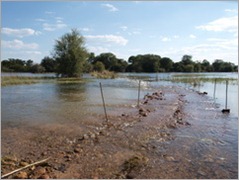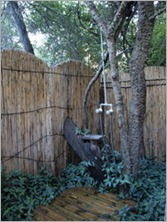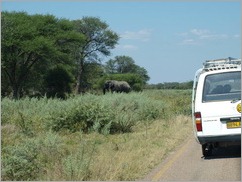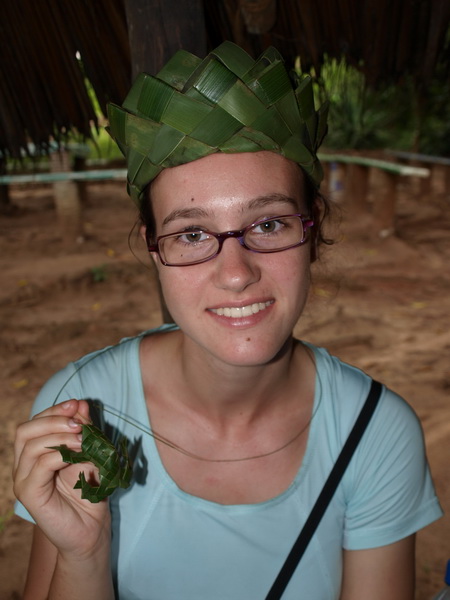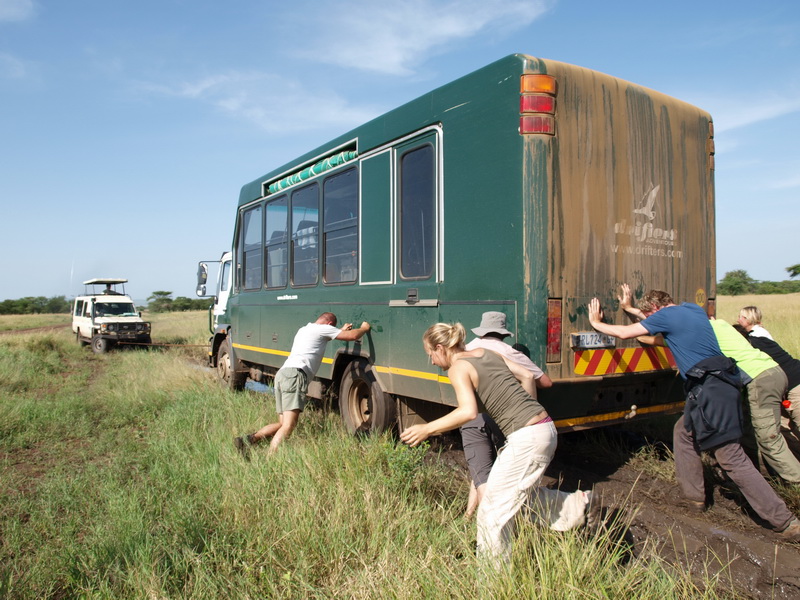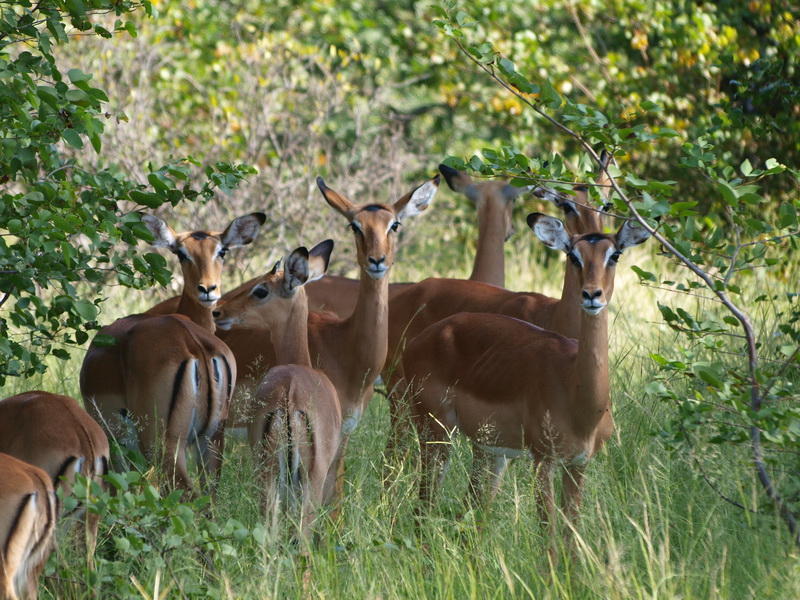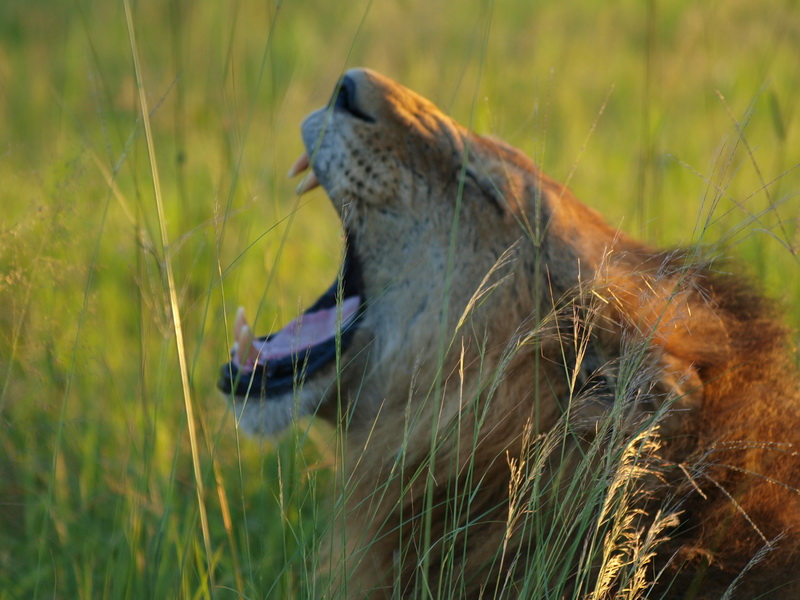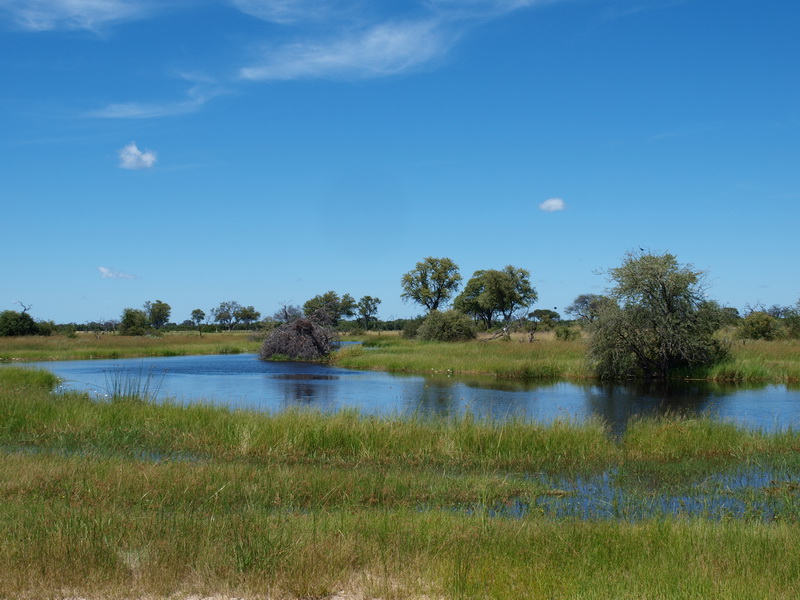We left Roys Camp and headed towards Popa Falls, stopping in at Rundu for fuel and money which is the largest town we have seen in some time having 4 supermarkets and all types of shops and banks.
Popa Falls, which are really just rapids, were not to be seen as the river is in flood, although the water is starting to drop now. Ngepi Camp was our overnight stop but unfortunately we could not get to the riverside camp sites as the road to them was too flooded. Getting into camp was a bit of an adventure in itself. The camp is about 4km off the  main road, and maybe a kilometre or so away from camp we suddenly ran out of road with just an expanse of water in front of us. A camp employee was stationed by the side of the road and informed us to engage 4wd and drive between the stakes, which made a curving track in the water, and we would be fine. That bit was 150-200m and we managed fine, although it was reasonably deep being above the side steps on our car, which conveniently gave the car a bit of a clean and got rid of some mud. Then around the next bend there was more water to cross. This time not as deep but it was across the river and flowing reasonably fast. The last bit was directly in front of reception where we had to cross a large lagoon that was also reasonably deep and then park up on the bank and climb out. So our first proper water crossings were to get into camp, not as I imagined it would be!
main road, and maybe a kilometre or so away from camp we suddenly ran out of road with just an expanse of water in front of us. A camp employee was stationed by the side of the road and informed us to engage 4wd and drive between the stakes, which made a curving track in the water, and we would be fine. That bit was 150-200m and we managed fine, although it was reasonably deep being above the side steps on our car, which conveniently gave the car a bit of a clean and got rid of some mud. Then around the next bend there was more water to cross. This time not as deep but it was across the river and flowing reasonably fast. The last bit was directly in front of reception where we had to cross a large lagoon that was also reasonably deep and then park up on the bank and climb out. So our first proper water crossings were to get into camp, not as I imagined it would be!
The camp itself is known for its quirky toilets and showers. They are all open air built in amongst the plants and trees. The pictures explain it.
Last night was the first night we have heard hippos, we still haven’t seen one though. The river that the camp is on is full of them and they do come into camp, but not last night.
Today we travelled through Mahango National Park to get to the Botswana border.  If you are transiting there is no cost, so of course we were transiting but just happened to accidentally take the river road and do a game drive rather than the direct route through the park – bargain! We saw some new animals for this trip, some Tsessebee, Sable Antelope and Lechwe along with the usual impala and zebra.
If you are transiting there is no cost, so of course we were transiting but just happened to accidentally take the river road and do a game drive rather than the direct route through the park – bargain! We saw some new animals for this trip, some Tsessebee, Sable Antelope and Lechwe along with the usual impala and zebra.
Entry into Botswana was easy and took all of 10 minutes to leave Namibia and be in Botswana. The total cost for road tax, insurance and the road fund was 100 Pula, however as we didn’t have Pula we could pay in Namibian dollars, but it would be $160 (it was still only $23). Given that the Pula and the Namibian Dollar are almost equal that was a pretty big rip off and a great way for the government to make more money, but what can you do when there is no currency exchange at the border?
We are now at Tsodillo Hills where there are a large number of rock paintings done by the San people thousands of years ago. We will do the walk to see them in the morning with a guide. Things are definitely getting more rustic now and I think our luck has probably run out with civilised, clean amenities with hot water! The amenities are not particularly clean, and even though there is supposedly solar hot water, there was not a bit of warmth in the water (lucky it is still pretty hot at the moment). I also had to tackle wasps and other flying bugs in order to go to the toilet this afternoon – peeing in the bush is just so much easier some times!
Tomorrow we will head to Maun to try and get the car serviced, get money and food and try and reserve camping sites in the Kalahari (fingers crossed we are successful).

